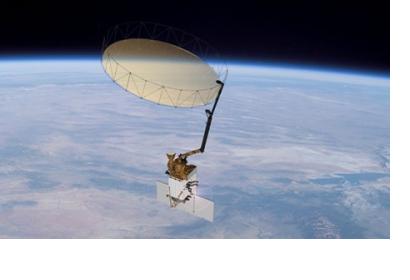At present no ground or satellite based global network infrastructure exists for monitoring soil moisture on a local level. The Soil Moisture Active Passive SMAP satellite mission to be launched in October 2014 as part of NASA’s fall launch schedule will collect local data agriculture and water managers needed globally. SMAP’s payload includes two microwave instruments capable of monitoring Earth’s surface to a depth of 5 cm mapping the planet every two to three days. Providing the most detailed soils maps to date in an effort to fill the infrastructure gap.
"Scientists see tremendous potential in SMAP. It is not going to provide field-level information, but it will give very useful new regional observations of soil moisture conditions, which will be important for drought monitoring and a wide range of applications related to agriculture. Having the ability provided by SMAP to continuously map soil moisture conditions over large areas will be a major advance", said Forrest Melton, a research scientist in the Ecological Forecasting Lab at NASA Ames Research Center.

